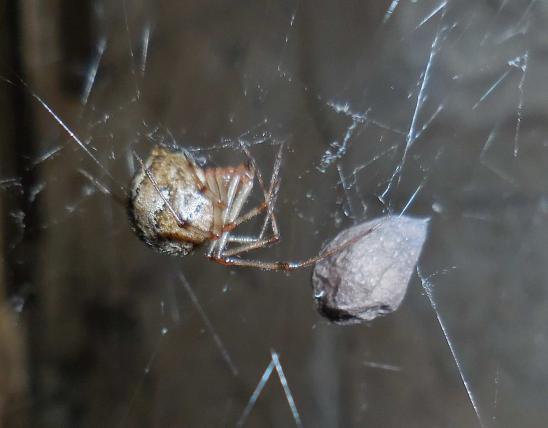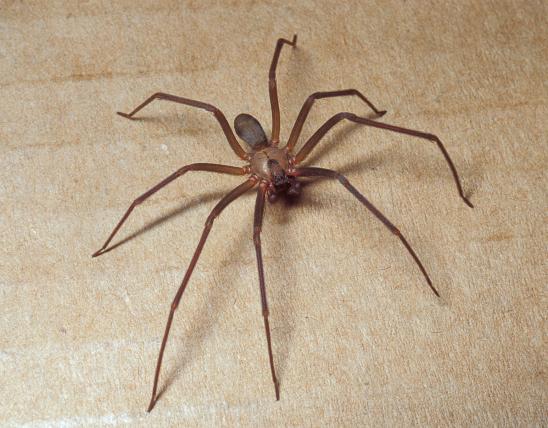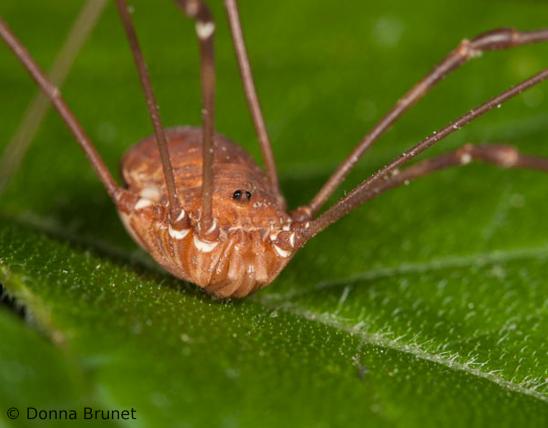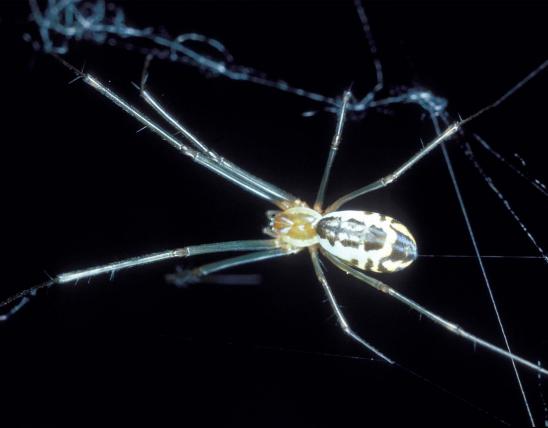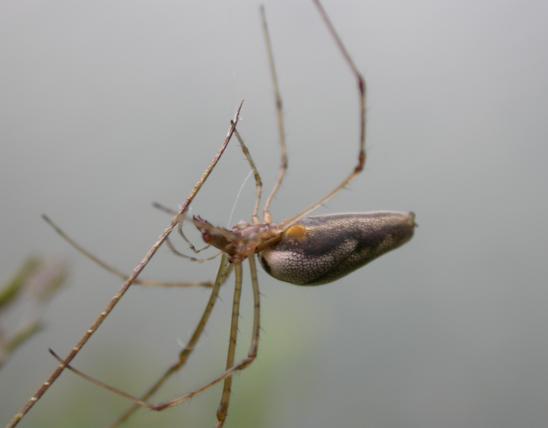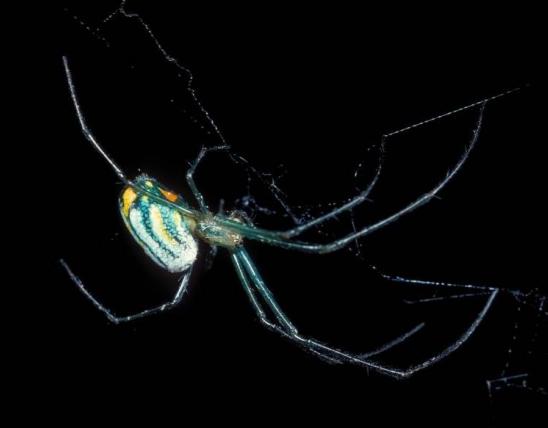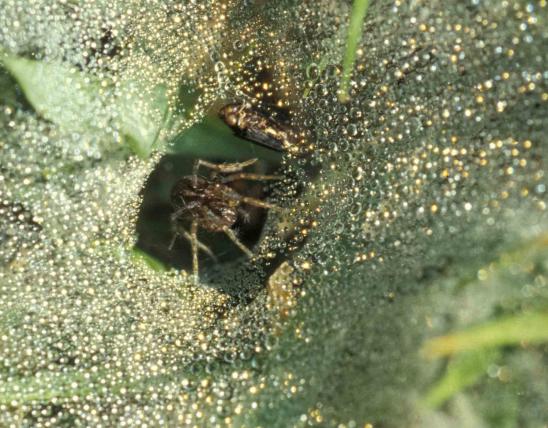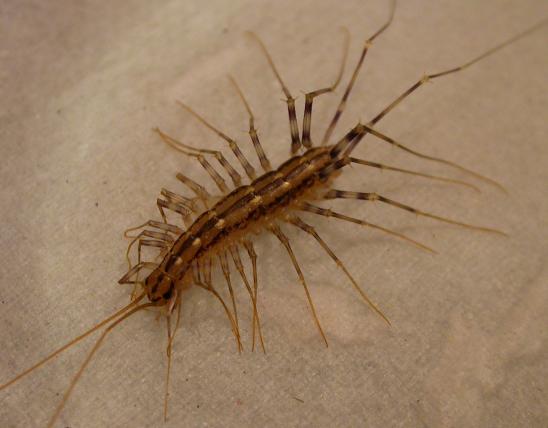
Cellar spiders are inconspicuous, harmless, fragile spiders with extremely long, thin legs. The tarsi (“feet”) are flexible, adding to the wispy impression they give. Other characteristics add to their camouflage: Their gray, tan, or whitish color, small body size, and remarkable habit of “vibrating” or bouncing rapidly in their webs when alarmed. This movement turns them into a blur, rendering them practically invisible to potential predators. Some species have darkened joints on their legs, giving them a “knobby-kneed” look. Most have oval or rounded abdomens, sometimes described as “peanut shaped.” Females build nonadhesive, unorganized, messy-looking cobwebs, usually in corners or crevices. Many common spiders in this family have 8 eyes arranged into three groups: 2 in the center of the face, and a cluster of 3 on each side of the central pair.
Perhaps the most common species in our area is the longbodied cellar spider, Pholcus phalangioides. To distinguish it from other cellar spiders may require close examination of palps, “face” structure, carapace markings, and eye groupings.
Similar species: Though they also have long, thin legs and are also often called daddy longlegs, harvestmen (in order Opiliones) are quite different and unrelated. Among the obvious structural differences are harvestmen’s having one apparently unified (usually egg-shaped) body, while true spiders have clearly separate head and abdomen regions. Harvestmen do not have silk glands, so they cannot spin webs; they also lack the venom glands that true spiders possess.
Length: bodies usually no more than about ¼ inch long (not including legs)
Statewide.
Habitat and Conservation
Some species of cellar spiders are very common in homes, especially in garages, basements, and cellars, hence the common name. You may also see them in corners along the ceiling anywhere in the home. They usually hang belly-up. In nature, they usually live in the openings of caves, of crevices in cliffs, and other protected places.
Food
Cellar spiders eat other small arthropods (insects, spiders, and so forth). Often, they capture prey much larger than themselves, including wolf spiders, crane flies, and others. Because they devour so many other kinds of spiders and insects, many people tolerate their presence in their cellars. Because the webs are not sticky, cellar spiders rely on the complex matrix of webbing to capture prey, which they bite, wrap with silk, and then eat.
Status
Harmless spider commonly found in basements of homes.
Life Cycle
Males are smaller than females and are generally only seen when they are courting or mating with a female. Females create a cluster of eggs that are usually rather loosely bound together with silk (not the well-rounded egg sac many other spiders create). Cellar spider females carry their egg clusters in their jaws.
Human Connections
In some parts of the world, members of the cellar spider family prey on spiders that can bite and harm people, making them somewhat welcome in those regions. A myth about cellar spiders seems to have arisen from this ability to capture and kill spiders known to be harmfully venomous. This legend purports that cellar spiders have more potent venom than any other spider. But studies have shown this is not at all the case; in fact, pholcid venom is comparatively rather mild. So how can a cellar spider capture spiders in the black widow genus? The cellar spider simply casts long swaths of silk onto its prey, binding it securely from a safe distance.
Ecosystem Connections
Some cellar spider species have been known to enter the webs of other spiders, jiggle the web in a way that replicates the struggles of trapped insects, then bite and eat the “host” spider when it approaches.
As with many other insects and spiders, cellar spiders can become infected with a species of fungus that attacks only them. It often forms cottony globs at the major leg joints. So if you see a cellar spider that looks like it’s wearing a fluffy white poodle costume, it might be a victim of this fungal disease.
























